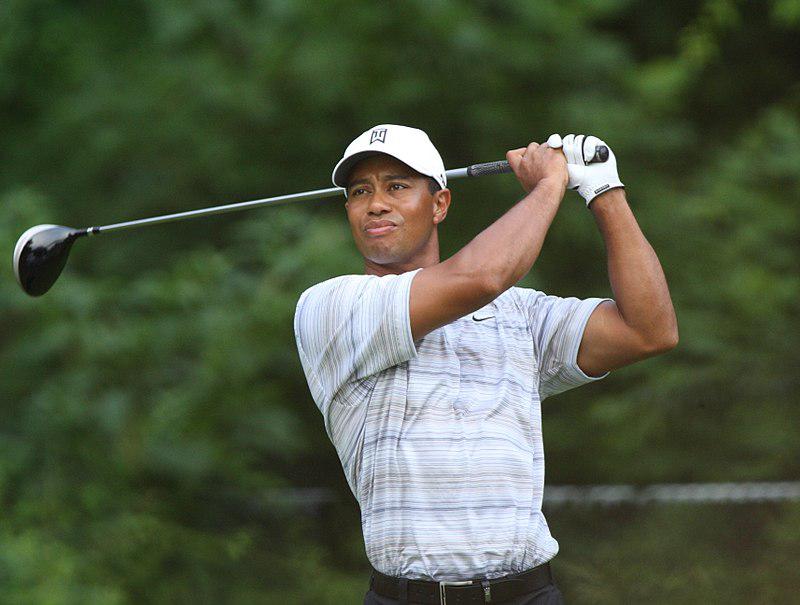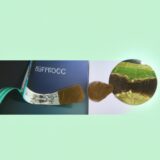Dustin Johnson, the American professional golfer, has captivated the world with his powerful and precise swing. His distinctive grip, posture and swing mechanics are meticulously analyzed in academic articles, highlighting the unique physical attributes and coordination that enable his exceptional power and accuracy. This article will explore the biomechanical analysis of Dustin Johnson’s golf swing, examining the techniques and strategies employed by the renowned golfer to achieve his remarkable success on the course.
– Biomechanical Foundations of Dustin Johnson’s Swing
Biomechanical Foundations of Dustin Johnson’s Swing
Dustin Johnson’s powerful and accurate golf swing is a testament to his exceptional biomechanics. His swing is characterized by a unique combination of flexibility, strength, and coordination.
One of the key biomechanical factors that contributes to Johnson’s success is his ability to generate a lot of clubhead speed. This is due to his long arms and a wide, powerful shoulder turn. He also has a very efficient downswing, where he is able to transfer his weight and momentum into the ball with great force.
In addition to his physical attributes, Johnson also has a very sound swing technique. He has a strong grip, a good posture, and a consistent swing plane. He also has a very good feel for the ball and is able to strike it with great accuracy. Dustin Johnson’s golf swing is a master class in biomechanics. He has a combination of physical attributes and technical skill that makes him one of the best golfers in the world.
| Biomechanical Factor | Key Features |
|---|---|
| Flexibility | Johnson has a very flexible swing, which allows him to generate a lot of clubhead speed. He is able to turn his shoulders and hips through a wide range of motion, which helps him to create a powerful downswing. |
| Strength | Johnson is a very strong golfer, which gives him the power to hit the ball a long way. He has a strong grip and a powerful shoulder turn, which helps him to generate a lot of clubhead speed. |
| Coordination | Johnson has a very good sense of timing and coordination. He is able to swing the club smoothly and consistently, which helps him to hit the ball with great accuracy. |
The effectiveness of a golf swing stems not only from technique but also from the grip and posture of the player. Dustin Johnson’s exceptional power and control over the ball can be attributed in part to his meticulous attention to these fundamental aspects.
Grip
Johnson employs a neutral grip, where the club is held in the palms with the thumbs resting lightly down the shaft. This grip promotes a relaxed and comfortable hold, allowing for a smooth and controlled swing. By maintaining a consistent grip, Johnson ensures a stable base for his swing, enhancing his accuracy and power.
Posture
Posture is equally crucial for generating power and maintaining control throughout the swing. Johnson stands with his feet shoulder-width apart, knees slightly bent, and spine straight. His weight is evenly distributed between both feet, providing a solid foundation for the swing. By maintaining an athletic stance, Johnson is able to generate maximum torque and control the club head through impact, resulting in powerful and precise shots.
- Swing Mechanics: A Detailed Examination of Johnson’s Power Stance
Swing Mechanics: A Detailed Examination of Johnson’s Power Stance
Johnson’s swing mechanics are a key factor in his success on the course. His powerful stance allows him to generate a lot of power and accuracy in his swing. Johnson stands with his feet shoulder-width apart, and his weight evenly distributed on both feet. His knees are slightly bent, and his back is straight. He holds the club with a neutral grip, and his hands are positioned slightly ahead of the ball.
As Johnson begins his swing, he takes a deep breath and coils his body. His weight shifts to his back foot, and his arms swing back in a smooth, controlled motion. At the top of his backswing, Johnson’s club is parallel to the ground. He then shifts his weight to his front foot and swings the club down in a powerful arc. His hips and shoulders rotate together, and his arms swing through the ball with a lot of speed. Johnson finishes his swing with a follow-through that is both powerful and balanced.
The following table summarizes the key elements of Johnson’s swing mechanics:
| Element | Description |
|---|---|
| Stance | Feet shoulder-width apart, weight evenly distributed, knees slightly bent, back straight |
| Grip | Neutral grip, hands slightly ahead of the ball |
| Backswing | Weight shifts to back foot, arms swing back in a smooth, controlled motion |
| Downswing | Weight shifts to front foot, club swings down in a powerful arc, hips and shoulders rotate together |
| Follow-through | Swing is powerful and balanced |
Cognitive factors play a crucial role in Dustin Johnson’s exceptional golf swing. His ability to maintain focus, timing, and tempo allows him to execute consistently powerful and precise shots.
Johnson’s focus is unwavering throughout his swing. He maintains a clear and consistent mental image of the desired shot, allowing him to direct his physical movements accurately. By eliminating distractions and staying present in the moment, he minimizes errors and maximizes shot quality.
Johnson’s timing is impeccable. He has mastered the rhythm and coordination required to load and unload his bodyweight efficiently. His swinging pattern is synchronized, allowing him to generate maximum power and ball speed while maintaining control. The precise sequencing of his body parts ensures that he strikes the ball with optimal impact.
– Instructional Strategies Inspired by Johnson’s Technique: Optimization for Individual Swing Improvement
– Instructional Strategies Inspired by Johnson’s Technique: Optimization for Individual Swing Improvement
Dustin Johnson’s golf swing is a masterclass in biomechanics and precision. By studying his technique, instructors and golfers alike can glean valuable insights that can help them improve their own swings. Here are a few key instructional strategies that can be implemented to optimize swing improvement:
-
Analyze the Grip and Posture: Johnson’s unique grip and posture are essential to his powerful and accurate swing. By replicating his grip and posture, golfers can create a solid foundation for an efficient swing. Instructors should emphasize the importance of a neutral grip, with the hands slightly forward and the shaft aligned with the forearm. Additionally, the posture should be athletic, with the spine straight and the head tilted slightly down.
-
Focus on the Swing Path and Tempo: Johnson’s swing path is one of the keys to his success. He consistently delivers the club on a shallow angle, which promotes both power and accuracy. Instructors should encourage golfers to focus on creating a similar swing path, ensuring that the clubhead travels along a slight arc and enters the ball at impact with a descending blow. Additionally, Johnson’s tempo is smooth and controlled, which allows him to generate maximum power without sacrificing accuracy. Instructors should encourage golfers to practice maintaining a steady tempo throughout their swing, ensuring that the weight transfer and clubhead speed are in sync.
-
Develop Flexibility and Core Strength: Johnson’s exceptional flexibility and core strength contribute significantly to his powerful swing. Flexibility allows him to make a full turn and swing the club with maximum velocity, while core strength provides stability and control throughout the swing. Instructors should incorporate exercises that enhance flexibility, such as stretching and yoga, into their training programs. Additionally, exercises that strengthen the core muscles, such as planks and sit-ups, should be included to help golfers develop a solid foundation for an efficient swing.
Instructional Analysis: Exploring the Technique of Dustin Johnson
Dustin Johnson, the prominent American professional golfer, has captivated the world with his powerful and precise swing technique. The article, titled “Instructional Analysis: Exploring the Technique of Dustin Johnson”, disentangles Johnson’s technique, investigating the biomechanical and cognitive characteristics that contribute to his standout performance on the golf course.
Johnson’s distinct grip, body posture, and swing strategies are carefully examined, underscoring the combination of unique physical characteristics and coordination that underlie his remarkable power and exactitude. Furthermore, the article delves into Johnson’s instructional approach, distinguishing its emphasis on foundational principles and individualized customization—thereby empowering students to perfect their own swings and attain their maximum capabilities.







